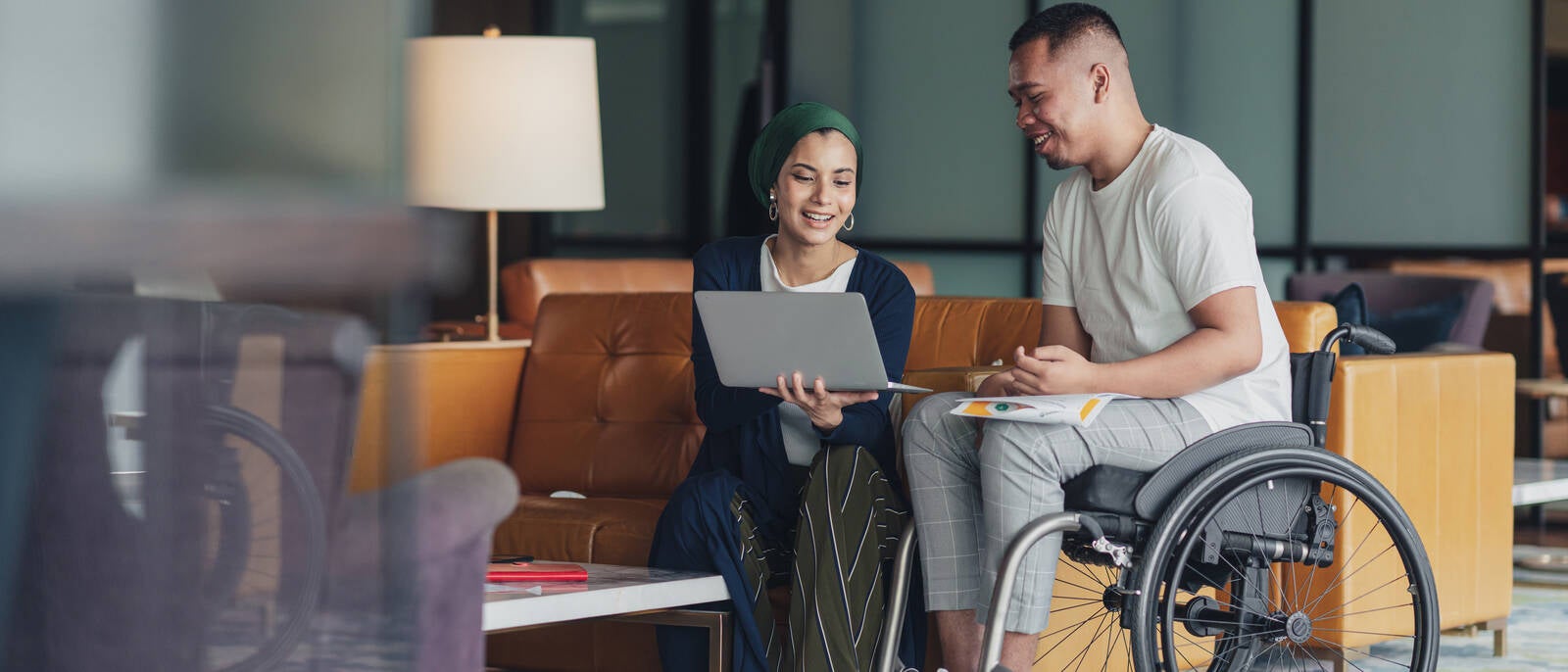- Home
- About us
- Accessibility at Scope
- Accessibility principles
Accessibility principles
Scope’s An Equal Future strategy includes making sure we lead the way in accessibility. We hold ourselves to the highest accessibility standards. This is so that our documents, our ways of working, our advice, and our communications are accessible.
To help us do this, we have 4 fundamental principles for colleagues to follow in everything they do at Scope.
Our principles
- Made for all or none at all
- No assumptions, just inclusion
- Nothing about us without us
- Diversity not division
Made for all or none at all
Not having access is a barrier that disabled people face every day. By changing the way we create our content, design our shops and offices, and the technology we use, we can remove these barriers.
Example 1
What
You’re creating a presentation. You need to make sure your presentation is accessible.
How
You use the accessibility guidelines to create your presentation. They help you consider the accessibility of your content throughout. You meet all accessibility best practices in your document. You do not need to ask the accessibility team for a content review.
Example 2
What
You are planning on opening a shop in a new building.
How
Before agreeing to a lease, you use the accessibility guidelines to check the building can meet all the requirements.
If it does not, you have a clear checklist to decide to look for a new shop location. Once you find a shop that meets the guidelines, you share them with the contractor. This makes sure the building work is planned correctly.
No assumptions, just inclusion
1 in 4 of us has an impairment or condition. We never assume there are no disabled people. Or say that our work is not aimed at disabled people. They’re our colleagues and professional contacts. Whoever you’re talking to or creating content for the guidance is the same.
Example 1
What
You’re updating an annual document and notice it’s inaccessible or does not use social model language.
How
You review the document against our accessibility guidelines and social model language. You share your learnings with colleagues across relevant teams and make the changes.
Example 2
What
You are creating a research report for:
- members of the public
- supporters
- members of parliament (MPs)
- businesses
How
You create the report in one format that meets the accessibility guidelines.
Someone asks for a PDF as a preference and not an accessibility need. You share why we are not able to offer this format.
Someone asks for a large print or braille version. This is an access need. You send them an alternative format.
Nothing about us without us
Everything we do should involve working with disabled people. This means we include lived experience in our work. Where possible, we should use co-production. This is where disabled people share in our decision making. For example, for events, campaigns and services.
There are some co-production exceptions. These include:
- some legal and financial decisions
- direct advice and information we offer about current government systems or benefits
Co-production and user research and testing are separate processes. They are both valuable for making sure we embed accessibility and disabled people’s experiences in our work.
Example 1
What
You want to hold an event and are beginning to think about what the event will achieve and how it will be designed.
How
You identify your stakeholders and include co-producers from the beginning. Your event includes disabled people’s insight and expertise, and you work together to make decisions. This makes sure that disability and accessibility is embedded throughout.
Example 2
What
You’re planning to create a new product or digital platform.
How
You build a user testing panel that includes disabled people, both internally and externally. This allows us to remove any barriers automated and manual testing missed.
It also helps us understand how different disabled people are using and engaging with the platform. We’re able to make sure that each part of the website is accessible and usable.
Diversity not division
Disability is experienced differently by everyone. Many disabled people experience more than one condition or impairment. An individual's access needs and adjustments may vary.
We listen and we understand what adjustments someone may need. By doing this, we can create an equitable experience with diversity at the centre.
Example 1
What
You’re planning on creating new content and need to use images to share meaning and impact.
How
You select imagery that shows a range of diversity from race, age, gender and ethnicity. Disability representation is authentic and shows a range of impairments. It’s also in accessible environments instead of staged locations.
You then provide alternative text (alt text) to all the images that give information not already covered on the page.
Example 2
What
You’re working on an event. You’ve had 2 requests about delivery of the event, one being in person and one being virtual.
How
You make the decision to make the event hybrid. This way, the event is more accessible. People can choose how to attend based on their needs.


